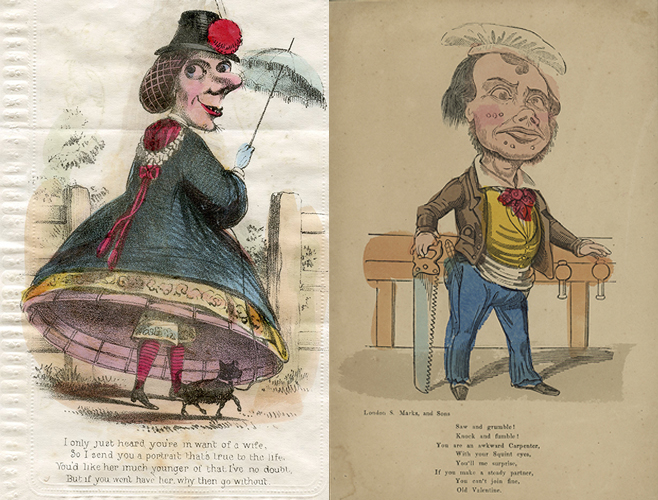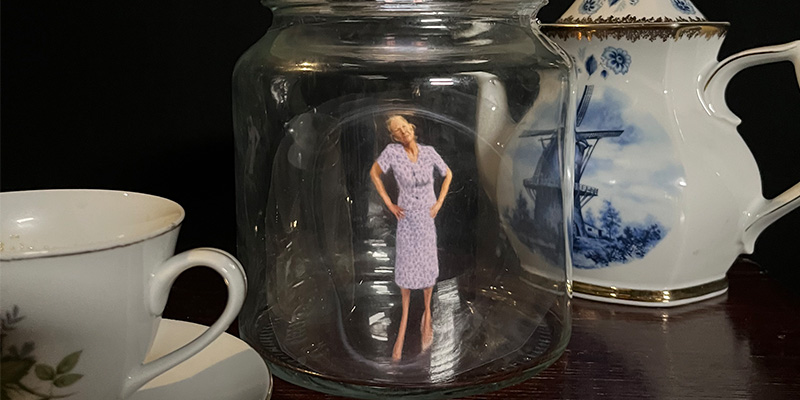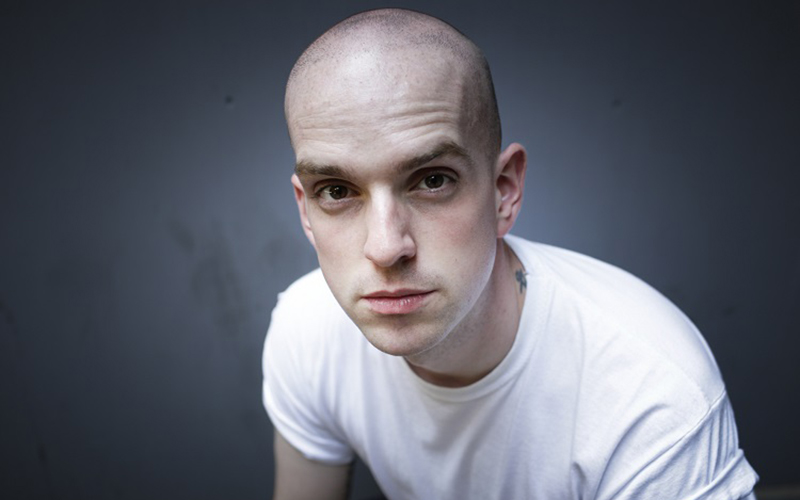News | Wednesday, 11th December 2019
Could running backwards be the key to getting faster going forwards?
Researchers seek to explain the true benefits of ‘retro running’ with world record holder

Sports scientists at Manchester Metropolitan University are helping a ‘retro-running’ world record holder to understand the physical and health benefits of running backwards.
Shantelle Gaston-Hird is a marathon, ultra-marathon and middle distance triathlon athlete and last month broke the world record for the fastest female to finish a half-marathon running backwards. Her time of 2:16:03 at the Manchester half-marathon beat the current record by almost four minutes.
Since starting backwards running – or otherwise known as retro-running – six years ago Gaston-Hird has noticed a massive improvement in her performance in conventional forward-facing races, and has managed to knock more than half an hour off her triathlon time.
Now Gaston-Hird has teamed up with Dr Dave Sims, Lecturer in Sports Performance, and Dr Richard Mills, Lecturer in Biomechanics, both from the Musculoskeletal Science and Sports Medicine Research Centre at Manchester Metropolitan University to understand the mechanics and benefits of retro running and see if this really is the reason for all of her success in normal races.
Personal best
Gaston-Hird said: “I started backwards running as part of a team-building activity with my roller derby team, but it turned out I was actually quite good at it.
“The day after the run my legs were really achy, so I knew there was something in it that could be good for my training and I decided to start including it.
“Since then, just by incorporating a couple of miles of backwards running into my forward training, I’ve found myself constantly beating my personal bests in my races.
“Where my friends might knock 10 minutes off their time, I have taken off half an hour and the only difference is that I have been backwards running.
“I’ve also found myself having fewer injuries and all of our functions that decline naturally as we get older such as my posture, proprioception, reactions and peripheral vision have all significantly improved. I can tell it works my muscles and that I’m stronger and quicker, but I’m just really intrigued to find out why.”
Training programme

The Manchester Metropolitan researchers devised a pre and post half-marathon training programme assessment to test the amount of oxygen Gaston-Hird was using when retro-running and to assess how the joints move and monitor muscle function while running both forwards and backwards on a treadmill.
So far, the data has revealed that Gaston-Hird uses around 30% more oxygen while running backwards compared to the same speed as moving forward, meaning more energy is required to run in reverse and it is physically more tiring.
To find out why this is the case, the researchers used technology technique called electromyography to highlight the muscles that they know are active when running forward to see if there are any differences in muscle activation.
They also used 3D motion capture cameras to track Gaston-Hird’s movements to understand how her limbs are moving.
Any difference in these functions from the normal forward movement could be the reason why more energy is used when traveling backwards.
Benefits
Dr Sims said: “Because there is no other data on backwards running, we can’t say for sure just yet what the true benefits are, but from looking at Shantelle’s data we can see that running backwards makes us use our muscles in a different way.
“The way in which the muscles contract when running backwards is likely to make them stronger, meaning that our muscles can cope with applying more force for longer, meaning that we could run quicker, for longer.
“So, if a runner wanted to beat their personal best, retro running could – ironically – be the way forward.”
Since becoming the world record holder, Gaston-Hird has been approached by boxing coaches to ask for her help to incorporate backwards running into their training regime, to not only make them stronger but to also help with their movement and awareness while in the ring.
The researchers will continue to work with Gaston-Hird to collect data and hope to attend the Retro Running World Championships in London next year to carry out tests on more backwards running athletes.




